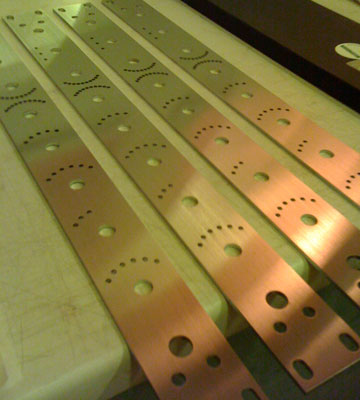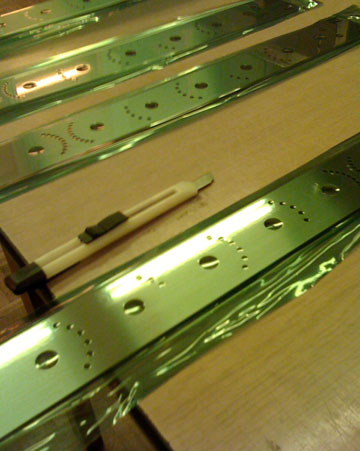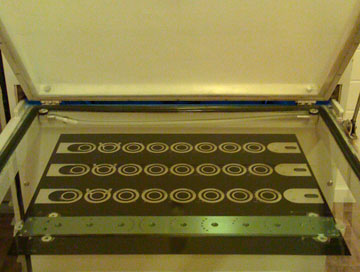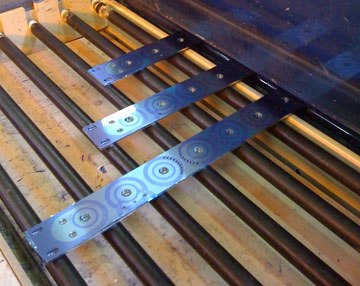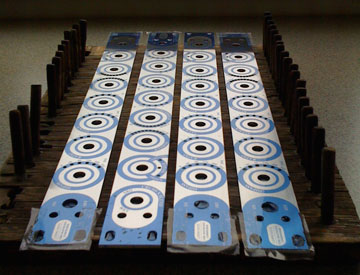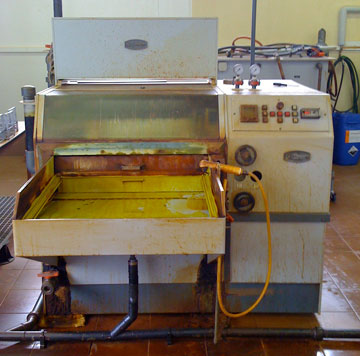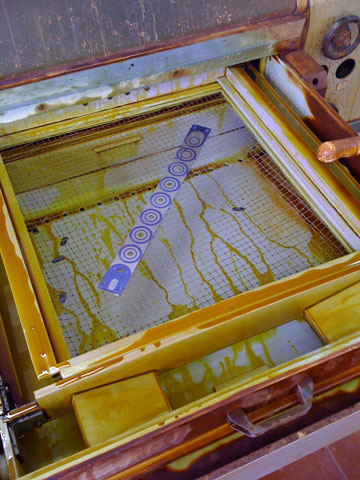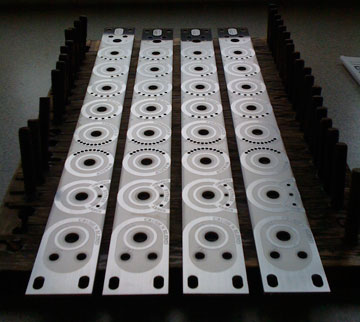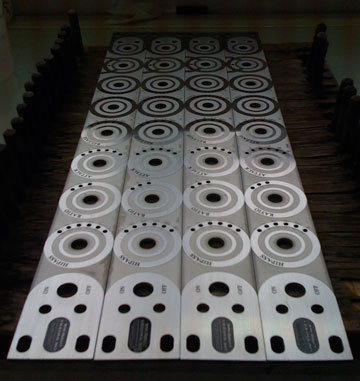Alright - Panel Time! ;D
Or "how to abuse an otherwise unsuspecting branch of the industry for
your DIY":
The blanks, lasered 3mm chrome steel, ready for lamination:
Photoresist laminated on:
Big vacuum exposer with the photoplots...don't screw up
registration or you get to do it all over again:
You can see the latent image as it goes into the developer:
Developed, and meticulously retouched by hand:
Now comes a machine you can do some major screw-ups with:
Board juuuust fits in the carrier:
Etched and stripped:
Makin' a mess with backfilling:
All cleaned up - now just have to remove the ferric stains
with something like stove cleaner and it's a wrap:
Yeah ;D
What I love about it is that you not only have total creative
freedom, it's chrome steel you're working with...feels very
different from Alu (though I love anodized Alu too).






















![Soldering Iron Kit, 120W LED Digital Advanced Solder Iron Soldering Gun kit, 110V Welding Tools, Smart Temperature Control [356℉-932℉], Extra 5pcs Tips, Auto Sleep, Temp Calibration, Orange](https://m.media-amazon.com/images/I/51sFKu9SdeL._SL500_.jpg)












